Slovenia’s capital may be one of Europe’s smallest, yet Ljubljana packs centuries of history, architecture, and culture into its compact old town. Nestled beneath a medieval castle and straddling the emerald Ljubljanica River, this pedestrian-friendly city center reveals its treasures through unhurried exploration on foot.
The city’s name—difficult for many visitors to pronounce at first—derives from the Slovene word ‘ljubljena,’ meaning beloved, an apt description for a place that captures hearts so easily. Here is a list of 18 must-see highlights in Ljubljana’s charming old town that you can comfortably experience in a single day of walking.
Dragon Bridge
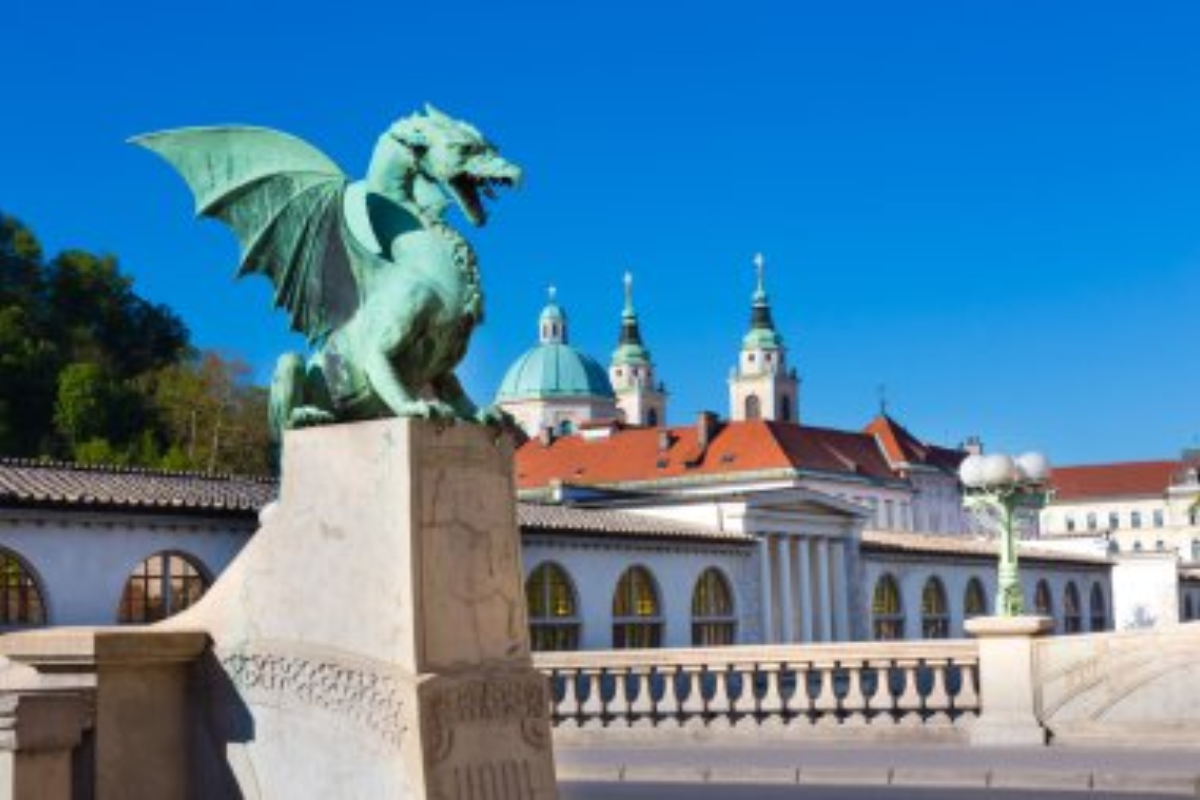
Four fearsome copper dragons guard this iconic bridge spanning the Ljubljanica River. Built in 1901, when Ljubljana was part of the Austro-Hungarian Empire, the bridge showcases Vienna Secession style—Central Europe’s take on Art Nouveau. The dragons have become the unofficial symbol of the city, appearing on everything from the municipal coat of arms to local beer labels.
Running your hand across the dragons’ worn green patina has become something of a good-luck tradition among visitors, though locals might give you a knowing smile for such transparent tourism.
Central Market
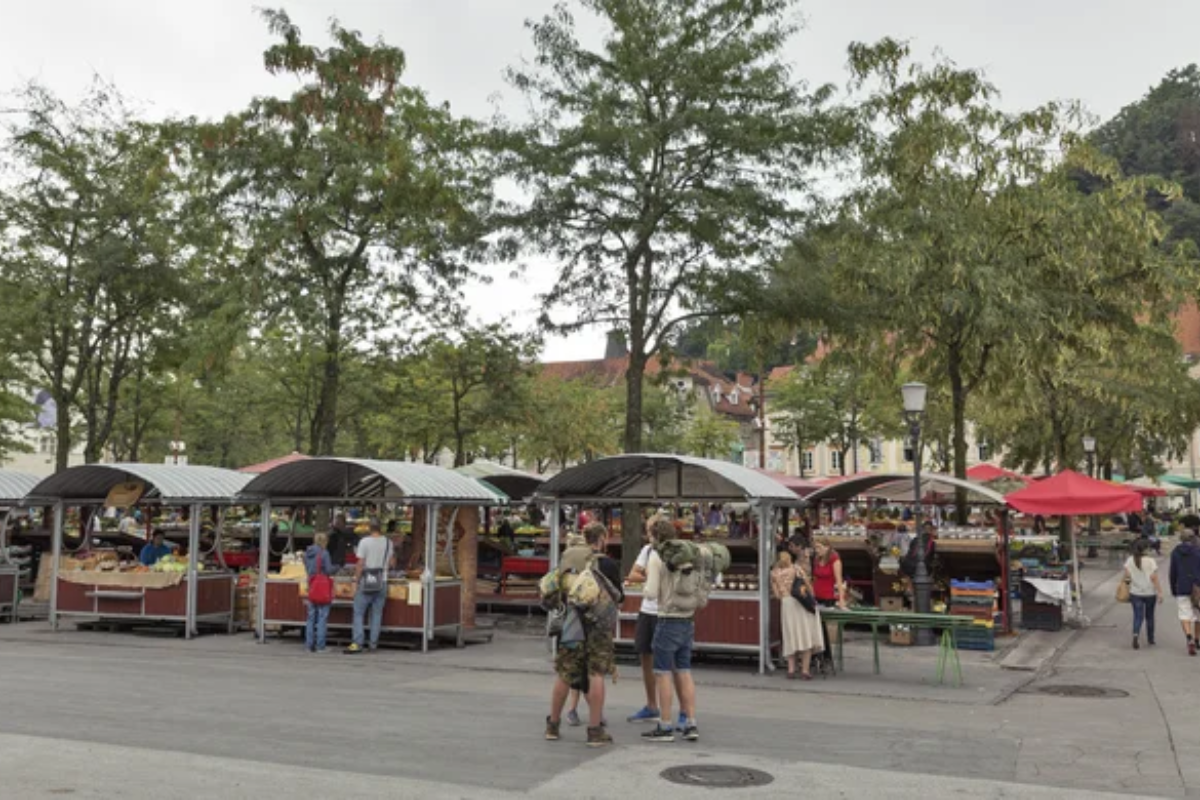
Designed by beloved Slovenian architect Jože Plečnik, this riverside market consists of a long colonnade of shops opening toward Ljubljanica. The market is divided into distinct sections—produce vendors occupy open-air stalls, while the covered section houses butchers, cheese makers, and bakers offering traditional Slovenian specialties.
On warm days, The Open Kitchen food market brings local chefs outdoors, creating a lively atmosphere where you can sample traditional dishes like štruklji (rolled dumplings) or prekmurska gibanica (layered pastry) while watching river boats drift past.
Like Travel Pug’s content? Follow us on MSN.
Triple Bridge
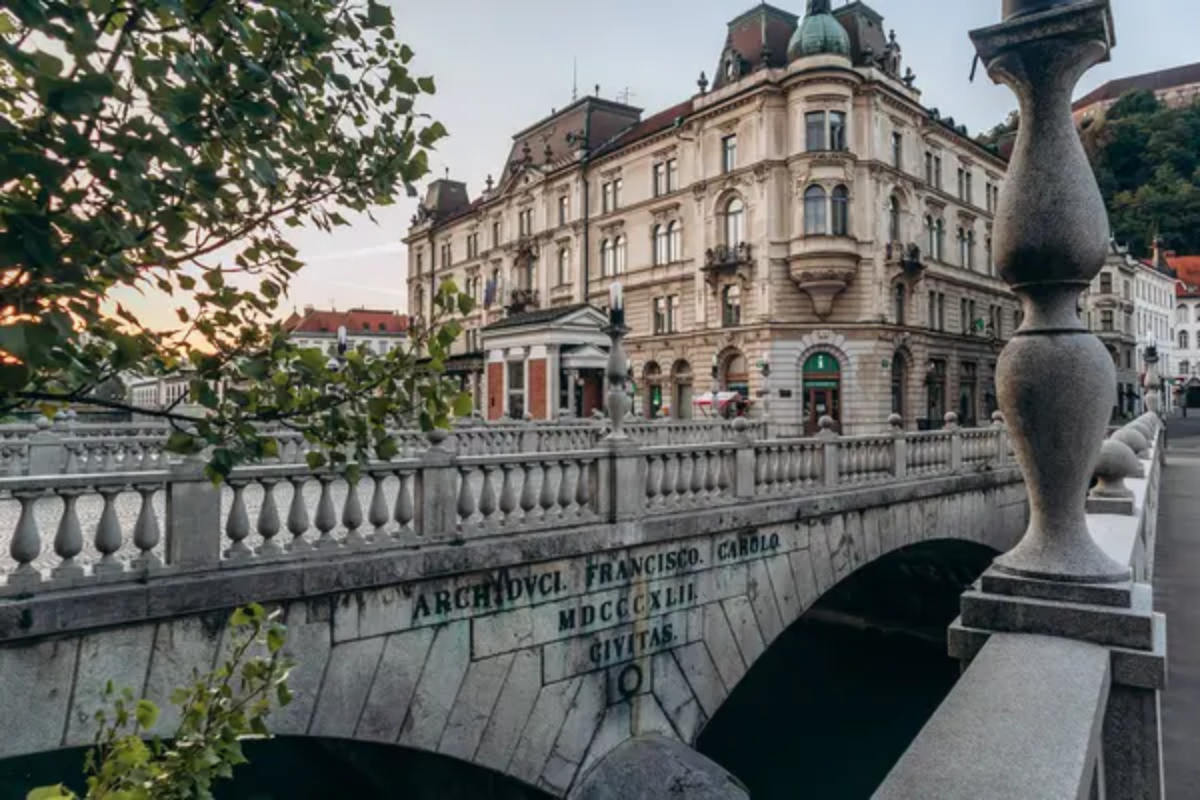
Another Plečnik masterpiece, this unusual bridge complex consists of a central stone bridge flanked by two pedestrian bridges added in the 1930s. The architect’s vision transformed a practical crossing into an elegant entrance plaza linking the medieval town with the more modern city center.
Stone balustrades and spherical street lamps create a ceremonial atmosphere, while steps descending to the riverside walkway invite you to view the bridges from below. Local musicians often perform here, their melodies mixing with the sound of flowing water and creating a quintessential Ljubljana soundtrack.
Prešeren Square
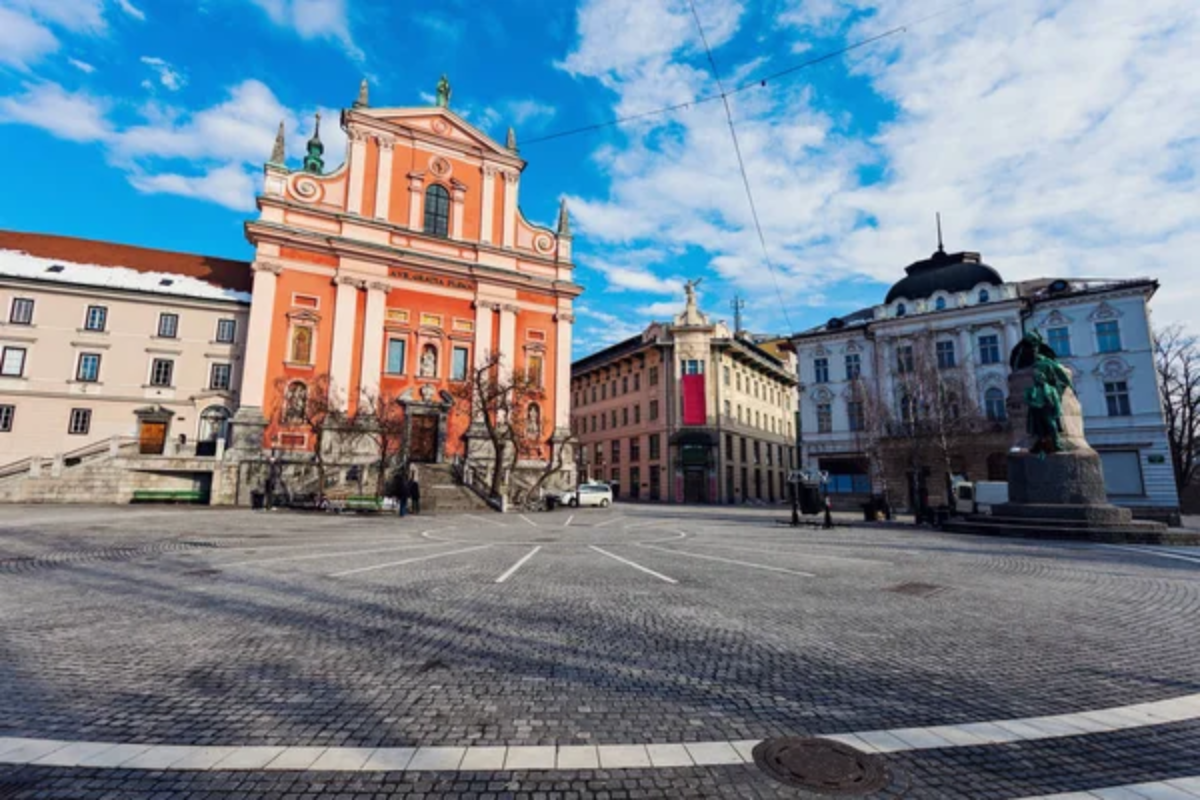
This vibrant plaza serves as Ljubljana’s living room—a meeting point bordered by distinctively colored Baroque and Art Nouveau buildings. At its center stands a monument to France Prešeren, Slovenia’s national poet, whose statue gazes permanently toward a sculpture of his unrequited love on a nearby building façade.
The iconic pink Franciscan Church of the Annunciation dominates the square’s edge, its distinctive color resulting from a 19th-century restoration after an earthquake damaged the original structure. Street performers, seasonal markets, and cultural events regularly transform the space, making it worth revisiting throughout your day.
Franciscan Church of the Annunciation
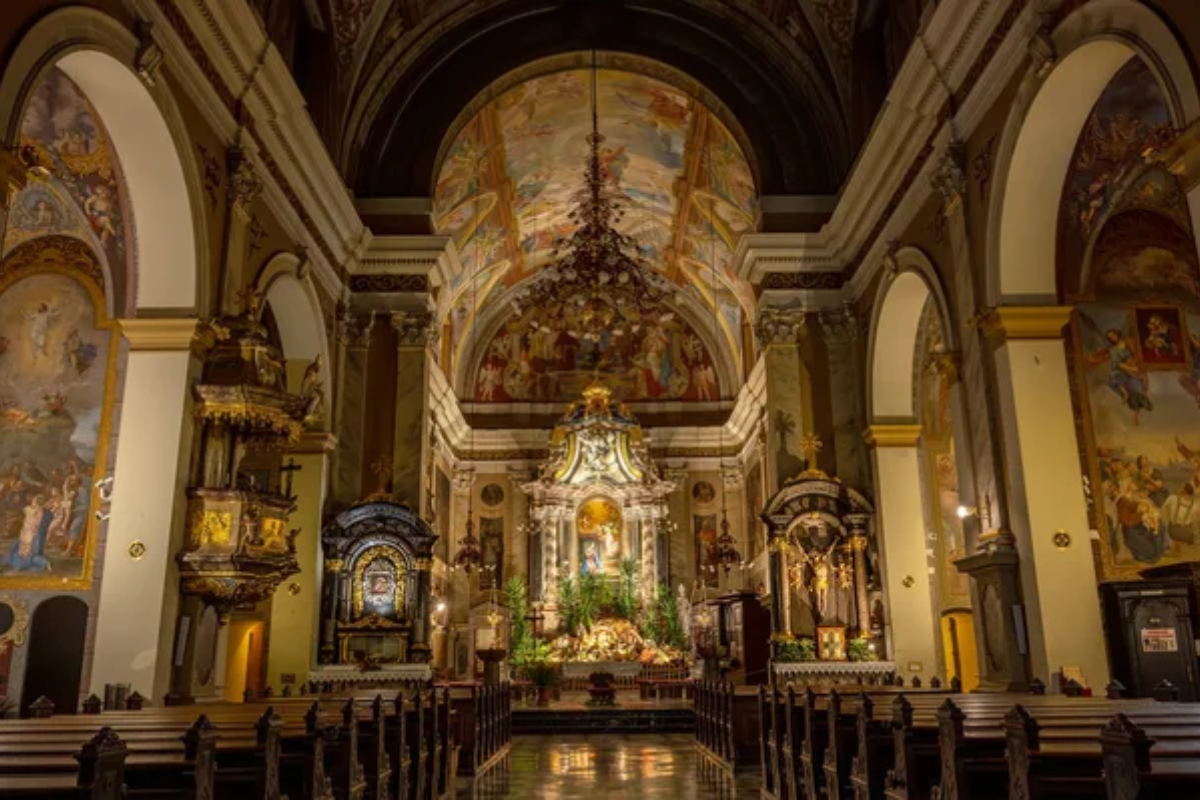
The salmon-pink façade of this Baroque church has become one of Ljubljana’s most photographed landmarks. Built in the 17th century by Augustinian monks before being acquired by Franciscans, the church interior features ornate altarpieces and frescoes contrasting with the simple principles of the Franciscan order.
The central altar painting depicts the Annunciation by Matevž Langus, while side chapels honor local saints largely unknown outside Slovenia. Listen for the church bells, which have marked Ljubljana’s hours for over three centuries—their tone is slightly different from others in the city due to the unique metal composition used in their casting.
Like Travel Pug’s content? Follow us on MSN.
Ljubljanica River Embankments
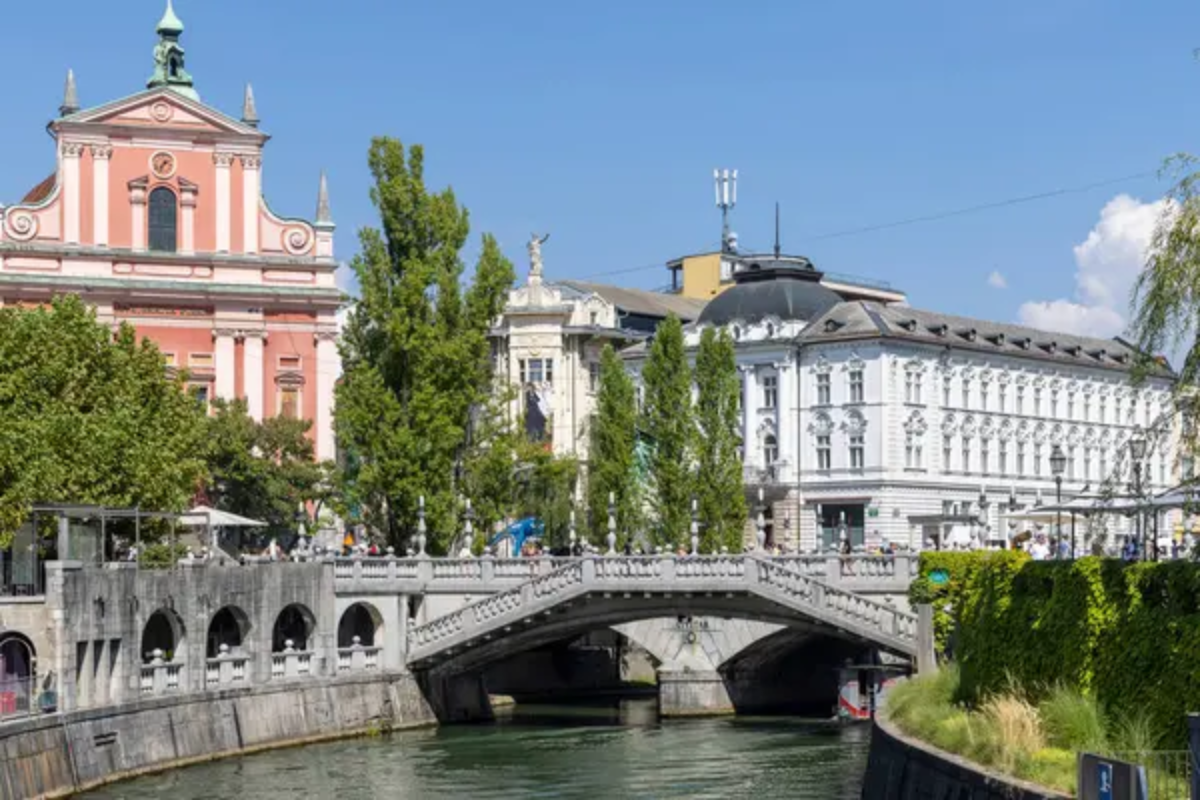
Plečnik’s vision transformed the riverbanks into elegant promenades with willow trees, distinctive railings, and stone stairways descending to the water level. These embankments serve as the city’s social spine, lined with cafés and restaurants whose outdoor seating fills quickly on sunny days.
Distinctive bridges cross the river at regular intervals, each with its character and history. The lower walkways along the water offer a different perspective of the city—here, you might spot massive carp swimming lazily beneath the surface or watch kayakers navigating the gentle current through the heart of town.
Ljubljana Castle
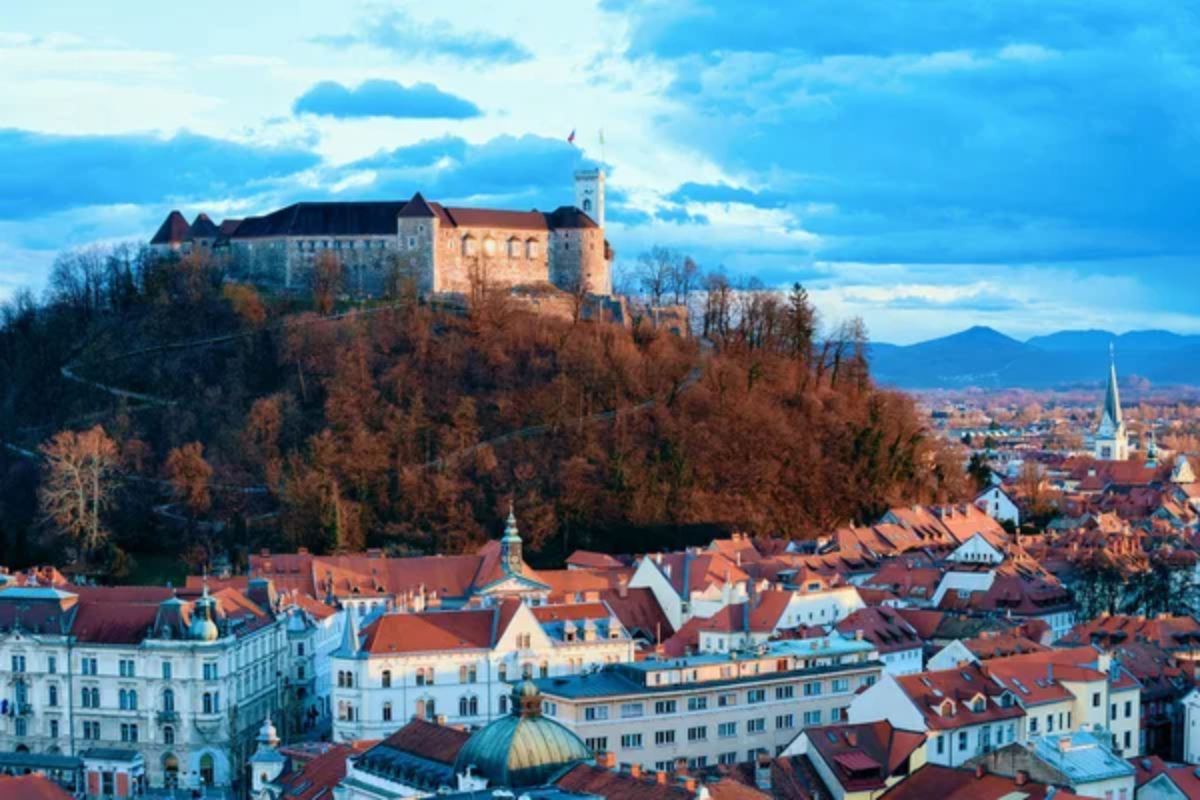
Perched atop a forested hill 375 feet above the city, this medieval fortress has watched over Ljubljana since the 12th century. While you can take a funicular to the top, the 20-minute walk up through narrow streets and wooded paths rewards you with increasingly spectacular views. The castle complex includes a watchtower offering 360-degree panoramas, a chapel with colorful Gothic frescoes, and museum exhibitions covering regional history.
The castle courtyard hosts summer film screenings and concerts under the stars, while the restaurant serves modern interpretations of traditional Slovenian dishes with views extending to the Julian Alps on clear days.
Cathedral of St. Nicholas
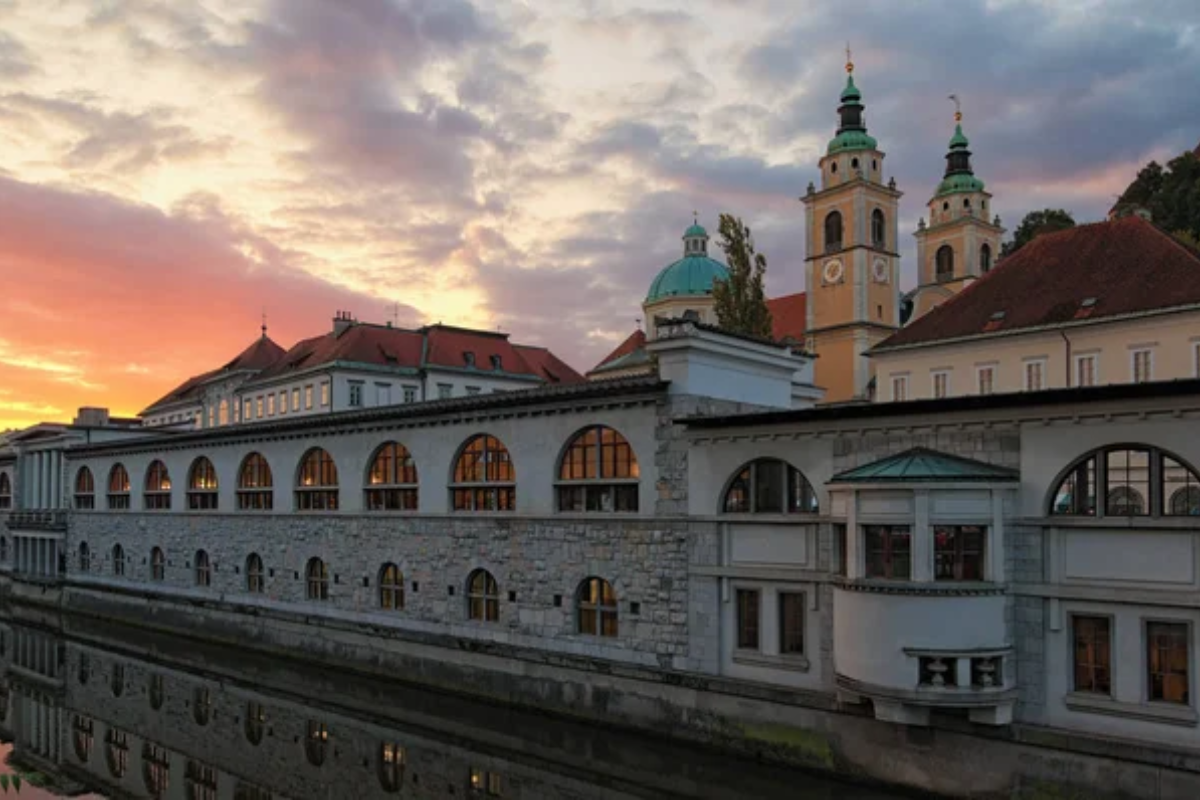
The green dome and twin towers of Ljubljana’s cathedral rise above surrounding buildings, its impressive Baroque façade featuring sculptures of bishops and scenes from Bible stories. But the real treasures wait inside—massive frescoes cover the vaulted ceilings, while the dome creates a play of natural light throughout the day.
The cathedral’s bronze doors, added in 1996 to commemorate Pope John Paul II’s visit, depict 1,250 years of Slovenian Christian history in bas-relief panels. The building serves not just as religious center but as guardian of cultural heritage, with regular organ recitals showcasing both the cathedral’s exceptional acoustics and Slovenia’s rich musical traditions.
Like Travel Pug’s content? Follow us on MSN.
Robba Fountain
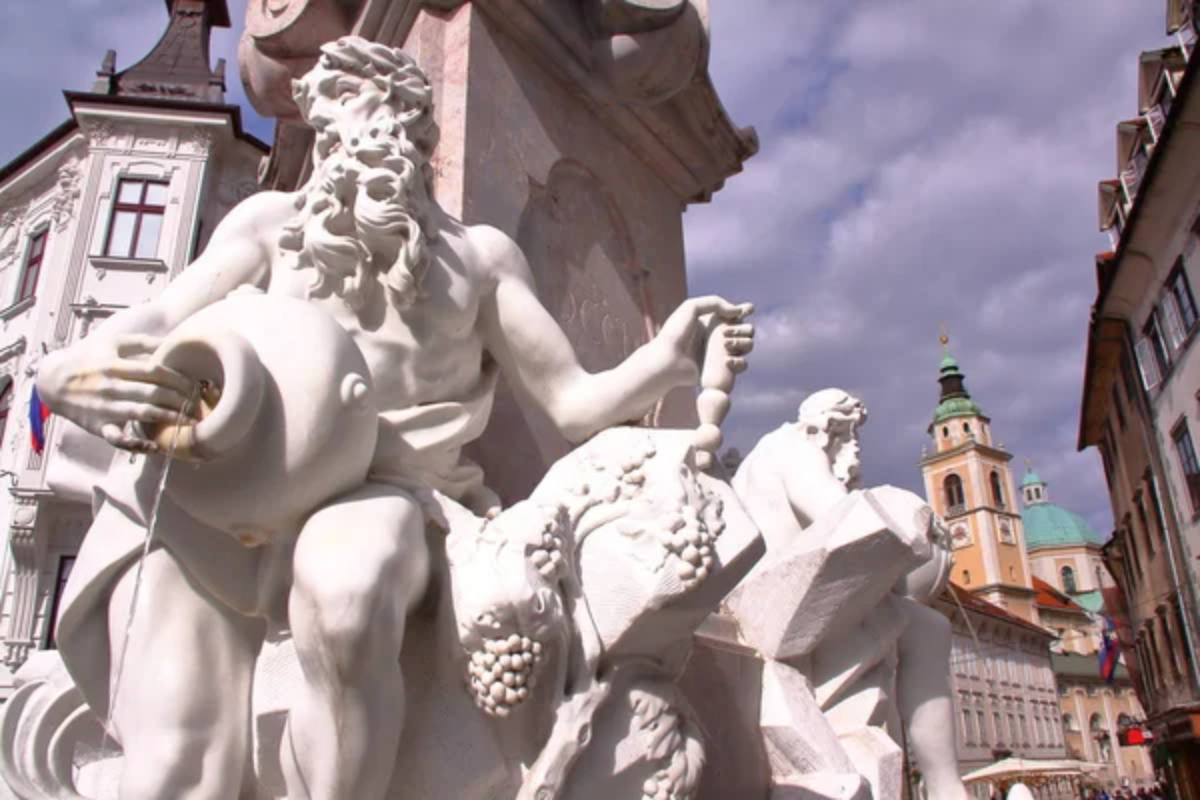
This dramatic Baroque fountain—officially called The Fountain of the Three Carniolan Rivers—stands in the old town square before the Town Hall. Created by Italian sculptor Francesco Robba in 1751, the white marble structure depicts three river gods representing the Ljubljanica, Sava, and Krka rivers that flow through the region.
The original fountain has been moved to the National Gallery for preservation, with a replica now occupying the historical location. During summer evenings, subtle lighting transforms the fountain into a gathering spot where visitors cool their hands in the water while discussing dinner plans.
Town Hall
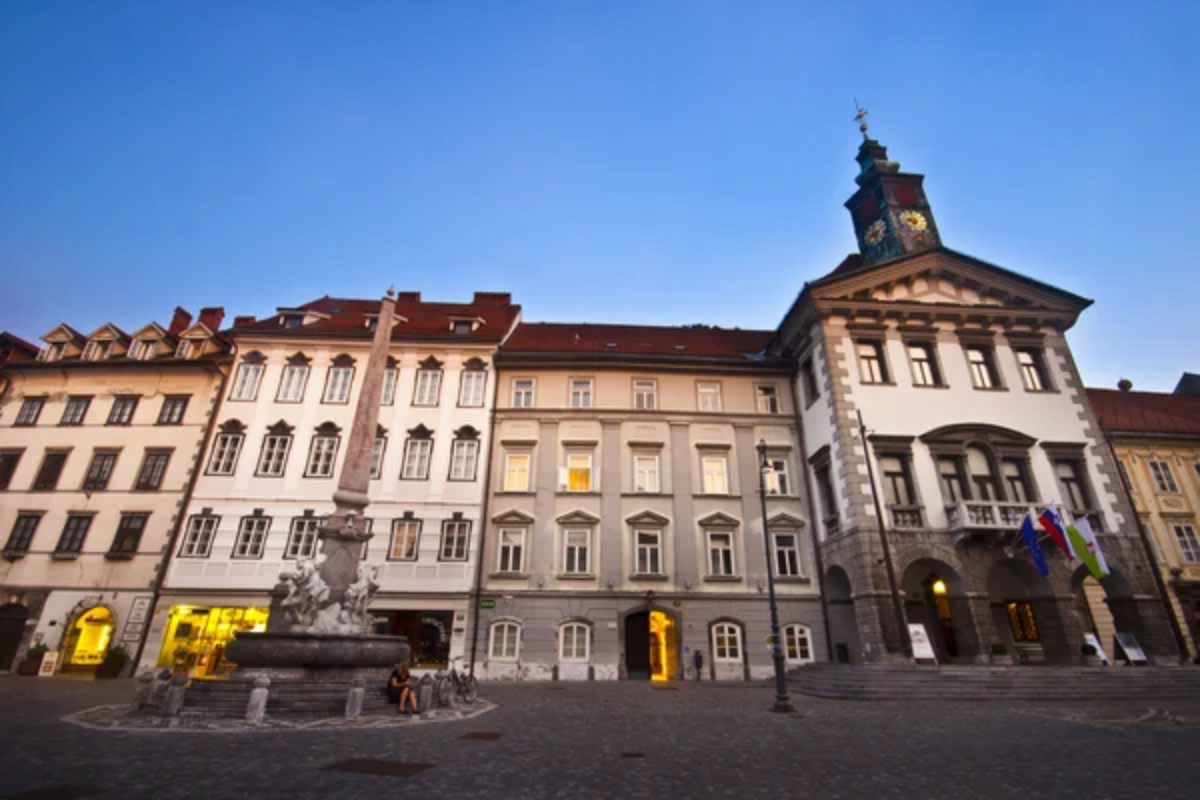
This elegant building with its distinctive clock tower has housed city government since the 15th century, though its current Baroque appearance dates to an 18th-century renovation. The courtyard features a reproduction of Robba’s Narcissus fountain, while the interior ceremonial halls display portraits of prominent mayors and intricate ceiling paintings depicting scenes from Ljubljana’s history.
A particularly moving modern addition is the glass case containing a fragment of the Berlin Wall—a gift acknowledging Slovenia’s role as the first republic to declare independence from communist Yugoslavia, helping trigger broader democratic changes across Eastern Europe.
Congress Square
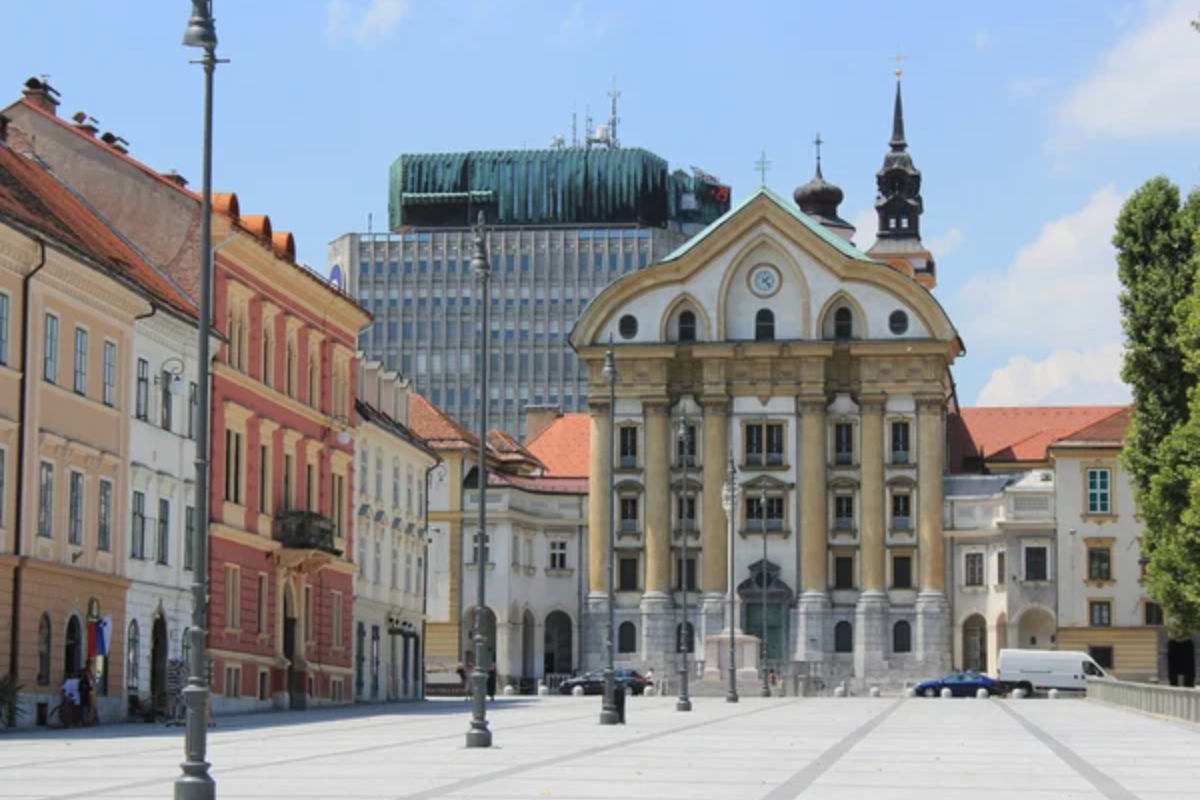
This spacious plaza has witnessed pivotal moments in Slovenian history, from Habsburg imperial visits to the proclamation of independence in 1991. Today, Kongresni trg serves as both the urban park and event space, bordered by significant buildings, including the University of Ljubljana and the Slovenian Philharmonic.
The square underwent extensive renovation in 2011, adding underground parking and restoring the Star Park at its center—a formal garden dating to 1821. Look for the statue of composer Gustav Mahler, who conducted at the nearby Philharmonic early in his career before achieving international fame.
Like Travel Pug’s content? Follow us on MSN.
National and University Library
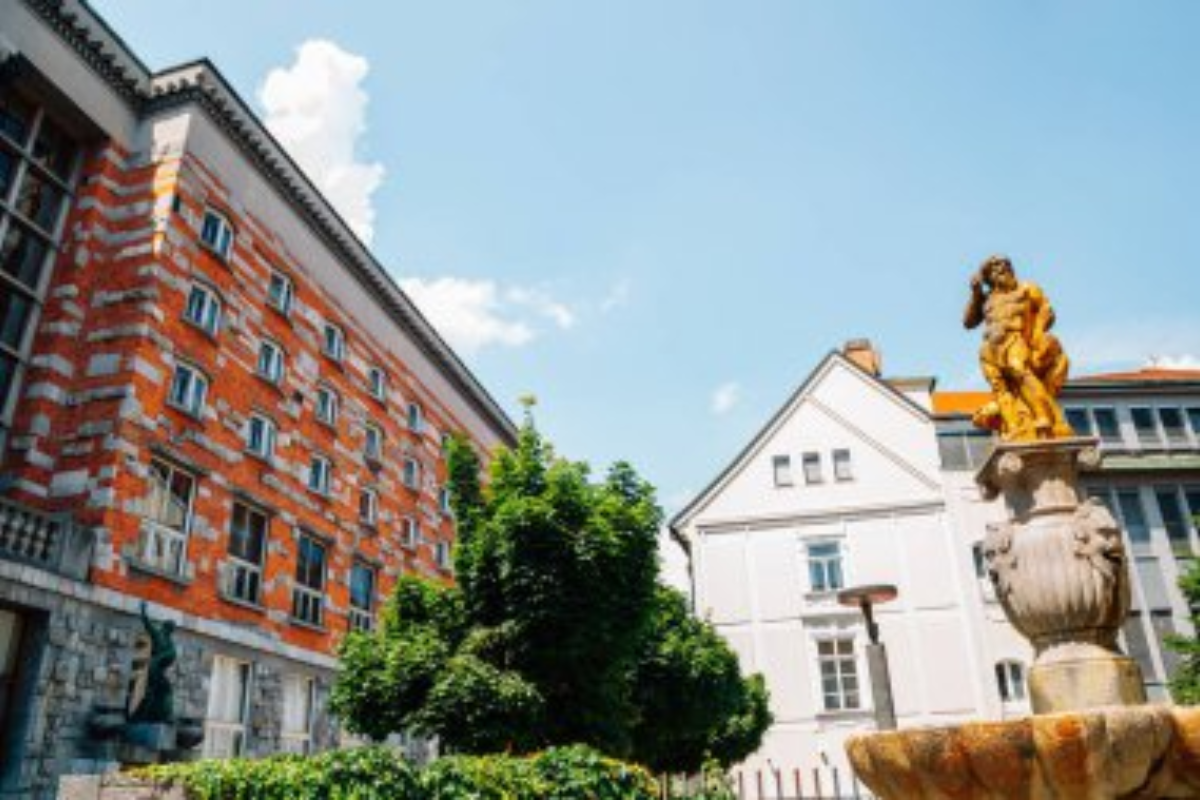
Perhaps Plečnik’s masterpiece, this temple to knowledge combines classical elements with the architect’s distinctive modernist vision. The façade alternates brick and stone in a pattern said to resemble an open book, while the monumental entrance staircase passes beneath a sculpture of Pegasus, symbolizing artistic inspiration.
Inside, the reading room features tall windows, wooden furnishings, and black marble columns, creating an atmosphere of serene scholarship. Even if you don’t enter, pause before the doorway to admire the unusual handles shaped like horse heads—a small detail revealing Plečnik’s attention to even minor elements of his designs.
Cobblers’ Bridge
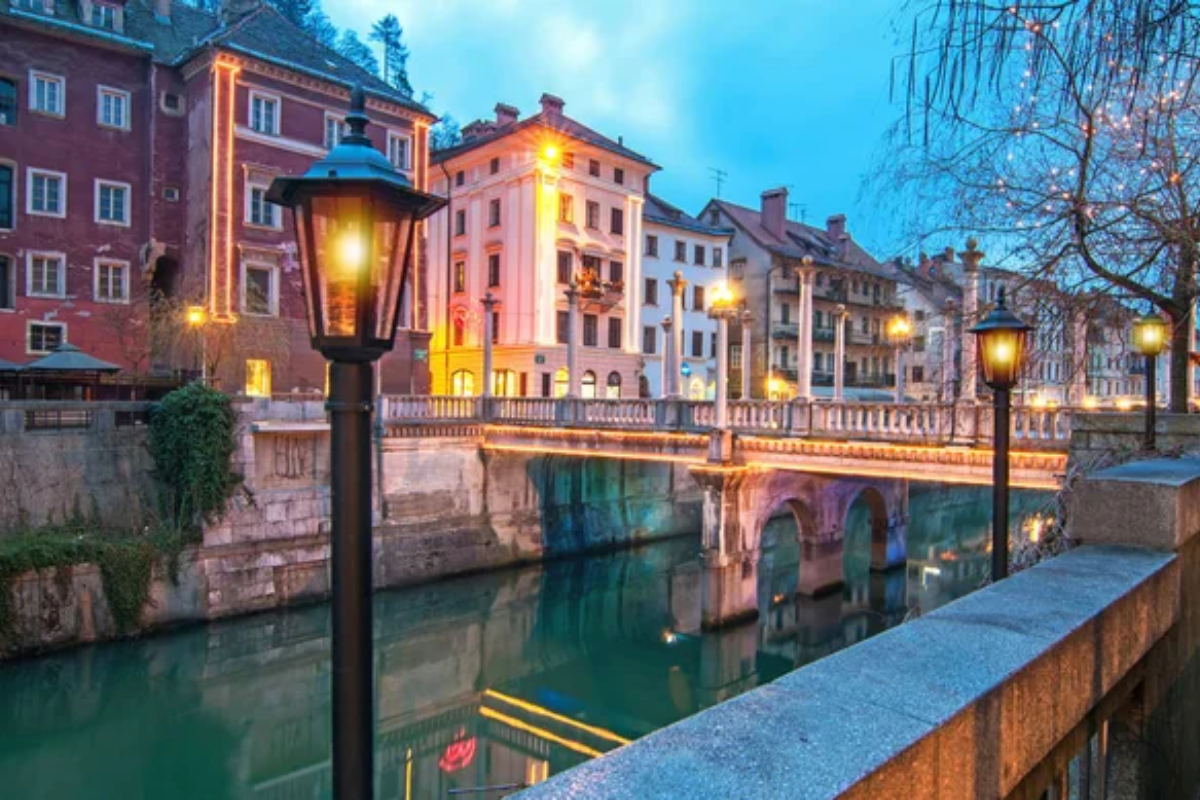
Unlike Ljubljana’s other crossings, this bridge contains no vehicle traffic—it remains purely pedestrian as it was when shoemakers established their workshops here in the Middle Ages. Plečnik redesigned the bridge in the 1930s, adding elegant balustrades and stone columns topped with streetlamps.
The bridge’s unusual width creates a plaza-like feeling, sometimes hosting small exhibitions or musicians. From here, get a perfect view of the distinctive asymmetrical rooflines of the old town, with the castle hill rising dramatically beyond. In spring, watch for the enormous trout that swim upstream during spawning season, visible in the clear waters below.
Butchers’ Bridge
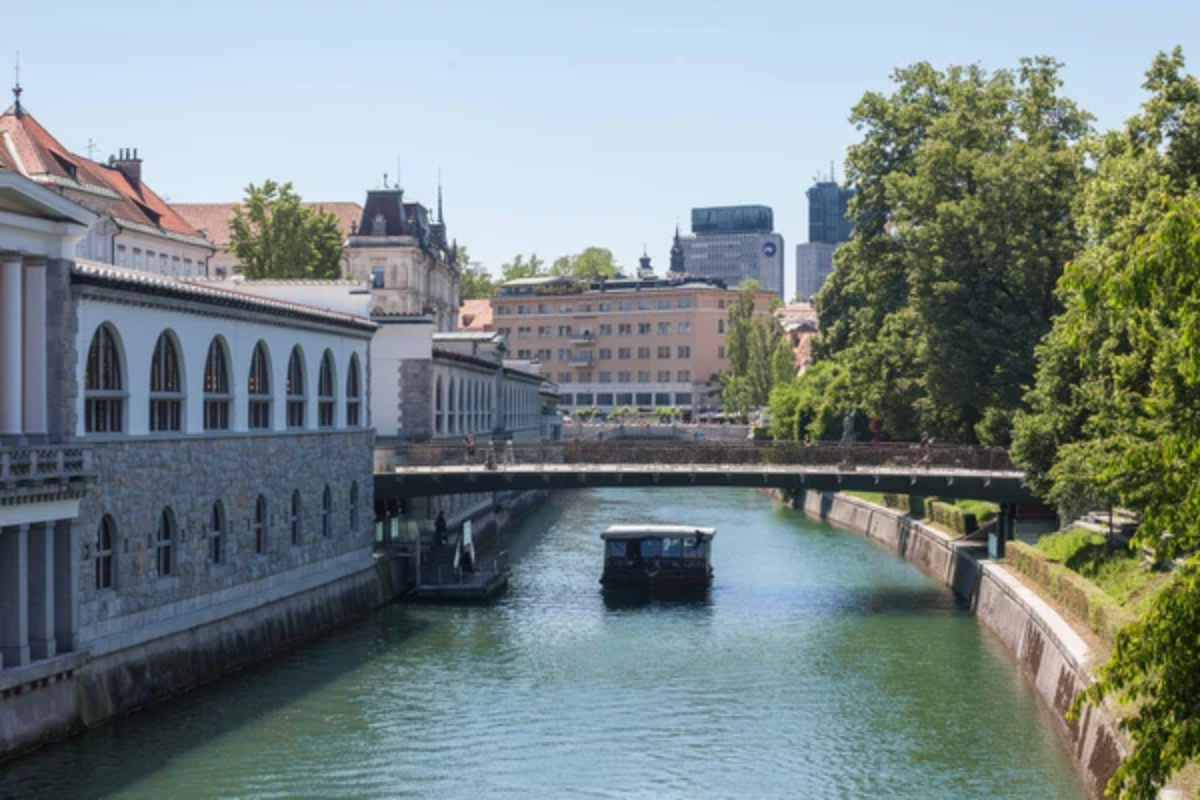
Ljubljana’s newest bridge quickly established modern traditions—couples attach padlocks to its steel cables as symbols of their love, similar to bridges in Paris and other European cities. But uniquely Slovenian are the somewhat disturbing bronze sculptures by Jakov Brdar that adorn the structure, including figures from classical mythology and grotesque creatures crawling up the railings.
The contrast between romantic gestures and unsettling artworks creates a distinctly Ljubljana juxtaposition—beauty and strangeness coexisting comfortably, much like the city itself with its blend of Alpine, Mediterranean, and Slavic influences.
Like Travel Pug’s content? Follow us on MSN.
Križanke Summer Theater
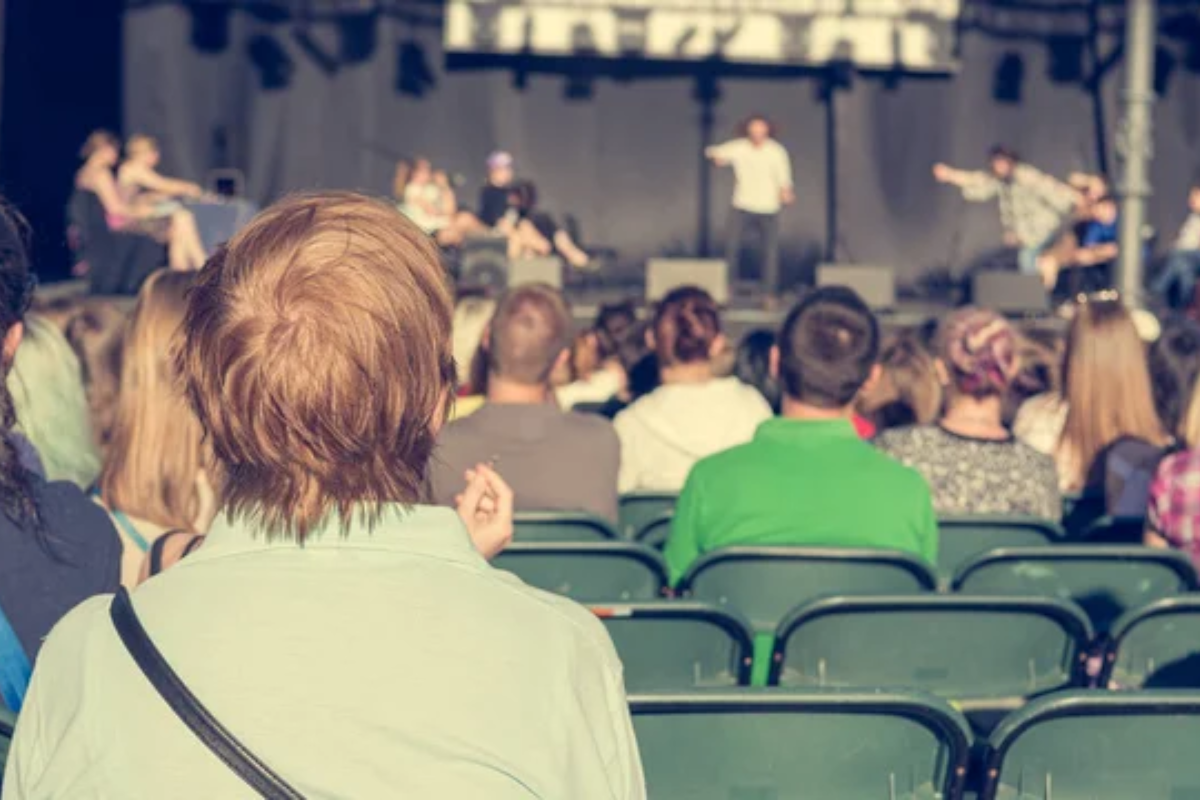
Once a 13th-century monastery belonging to the Teutonic Knights, this complex now serves as an open-air performance venue hosting Ljubljana’s summer festival. Plečnik again left his mark here, transforming the former monastery courtyard into an intimate theater space while preserving medieval architectural elements.
Even when no performances are scheduled, wander through the courtyards to discover Renaissance details, Gothic stone carvings, and peaceful corners where the city sounds fade away. The small café hidden within serves excellent coffee and locally made pastries, its tables arranged beneath ancient stone arches.
Metelkova City
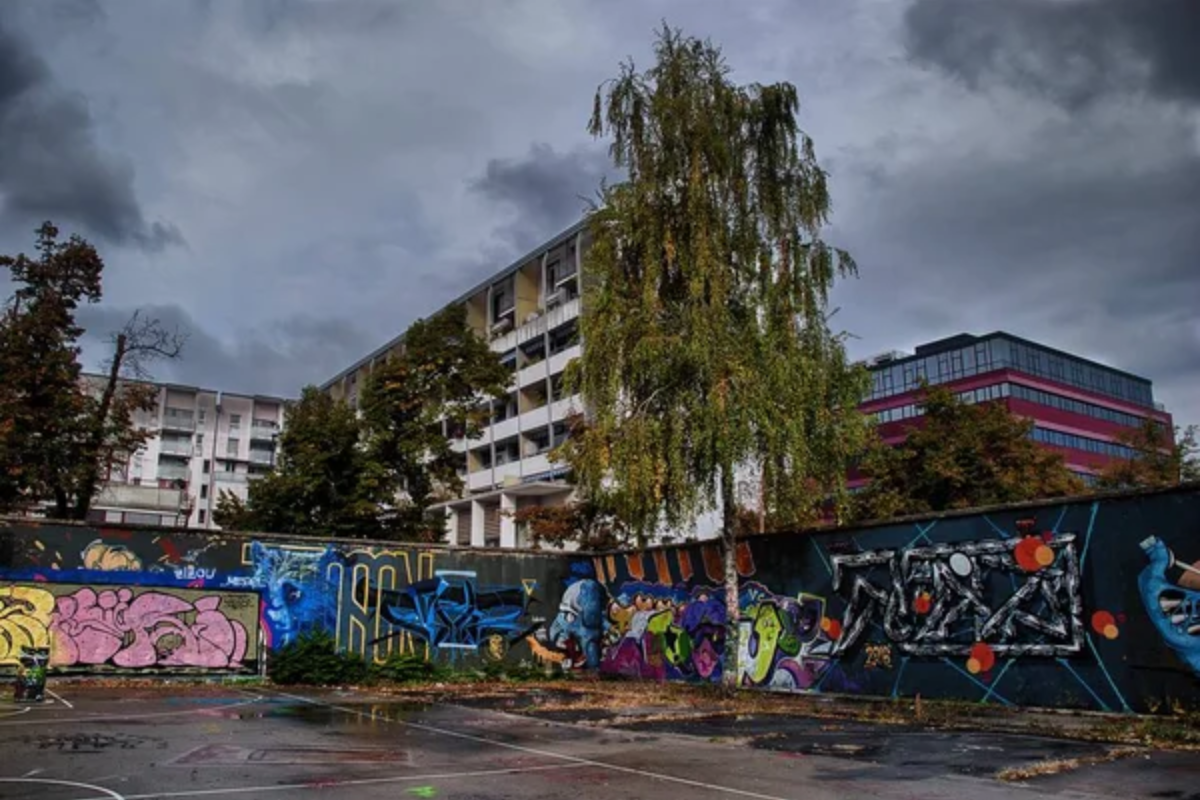
This autonomous cultural center occupies former military barracks that activist-artists squatted in the 1990s after Slovenia’s independence. Now legitimized as an alternative cultural zone, Metelkova’s buildings display some of Europe’s most creative street art, with sculptures built from found objects and every available surface covered in murals.
During daylight hours, explore the complex to photograph wildly decorated façades and unusual installations before the evening transformation into Ljubljana’s liveliest nightlife district. The contrast between Metelkova’s anarchic energy and the controlled elegance of Plečnik’s architecture elsewhere in the city highlights Ljubljana’s comfortable embrace of contradictions.
Old Square
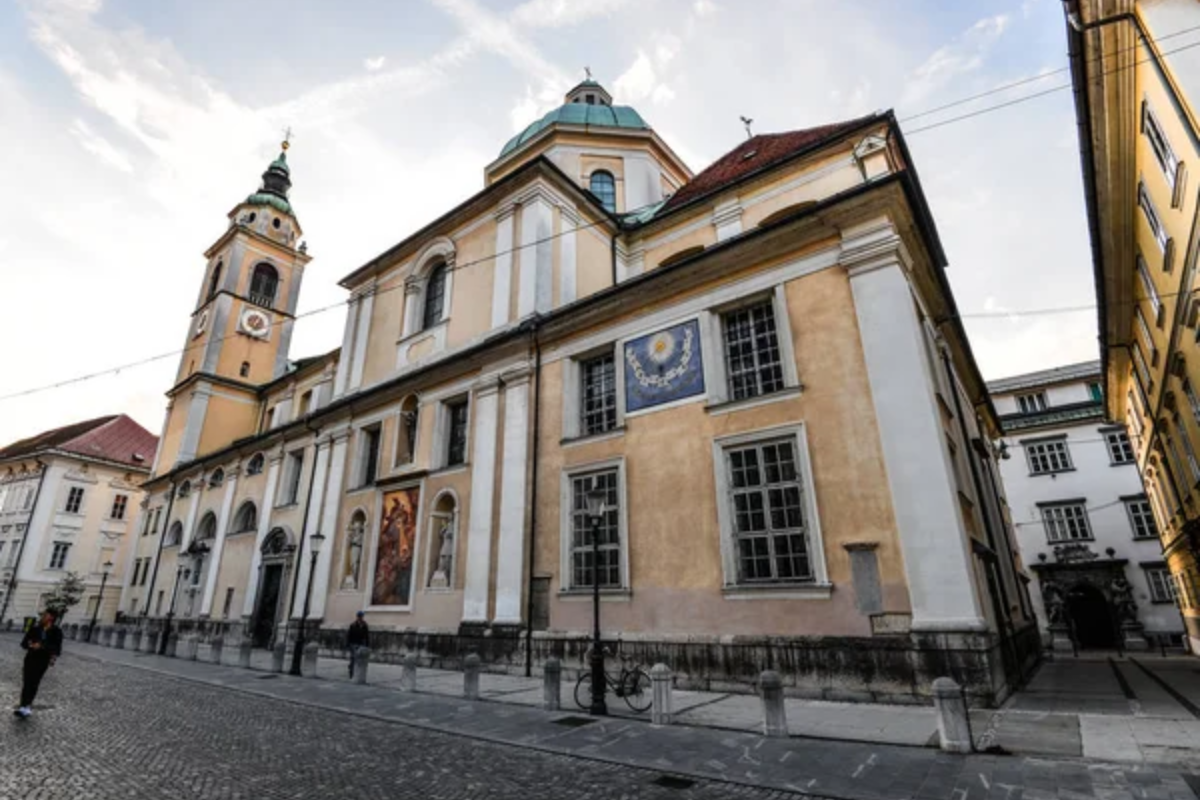
Ljubljana’s medieval heart retains its original layout, with narrow streets radiating from this small square where merchants once gathered to trade. Renaissance and Baroque façades in soft pastel hues line the plaza, and many buildings feature distinctive decorative elements that reveal the owner’s trade or status.
Look for the Schweiger House with its preserved 16th-century wooden ceiling or the Klein House with its distinctive Gothic stonework. The mix of architectural styles reflects Ljubljana’s position at the crossroads of cultural influences—Germanic, Italian, and Slavic elements blending into something distinctly Slovenian.
Like Travel Pug’s content? Follow us on MSN.
Tivoli Park
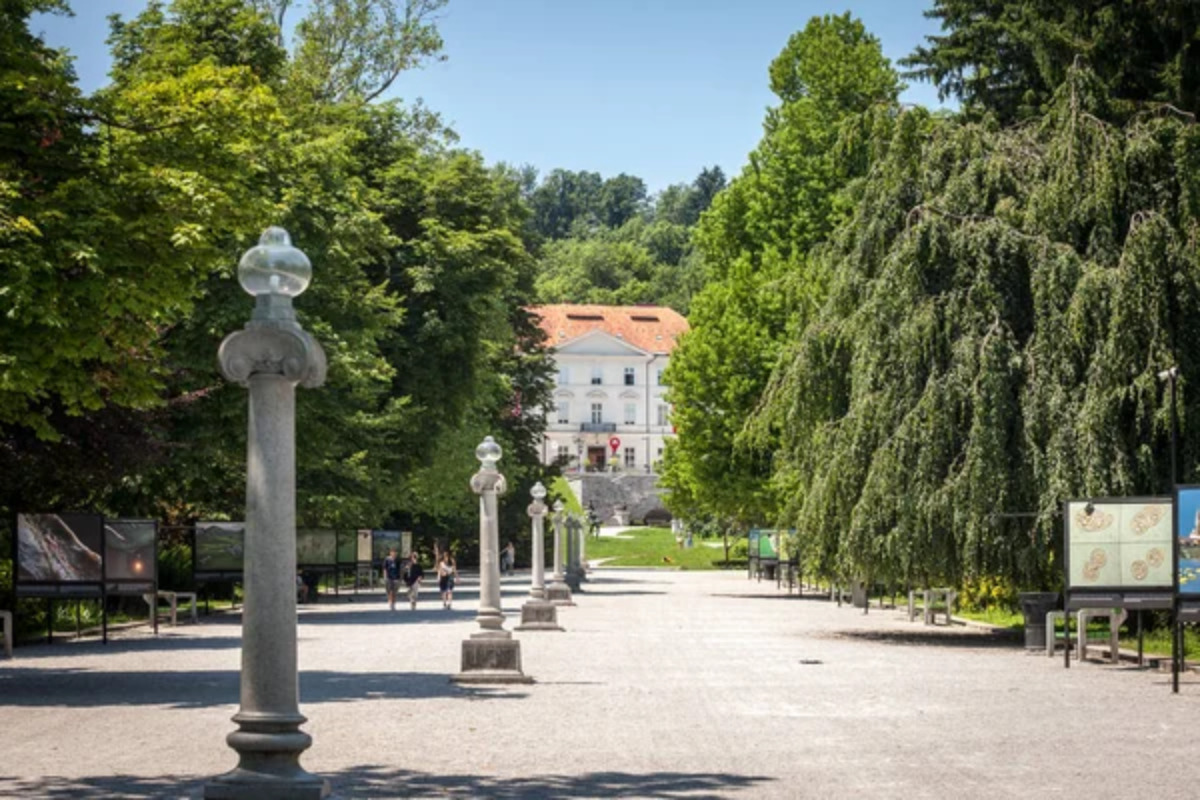
While technically beyond old town boundaries, no Ljubljana walking tour feels complete without reaching this expansive green space designed in 1813. The broad Jakopič Promenade, lined with chestnut trees and outdoor photography exhibitions, leads to Tivoli Castle—actually a 17th-century mansion housing the International Centre of Graphic Arts.
The park offers the perfect closure to a day of urban exploration, with well-maintained gardens, woodland paths, and meadows where locals exercise, picnic, and relax. From the slight elevation at Rožnik Hill within the park, look back toward the old town for a final panoramic view of red rooftops clustering beneath the castle hill.
A City of Human Scale
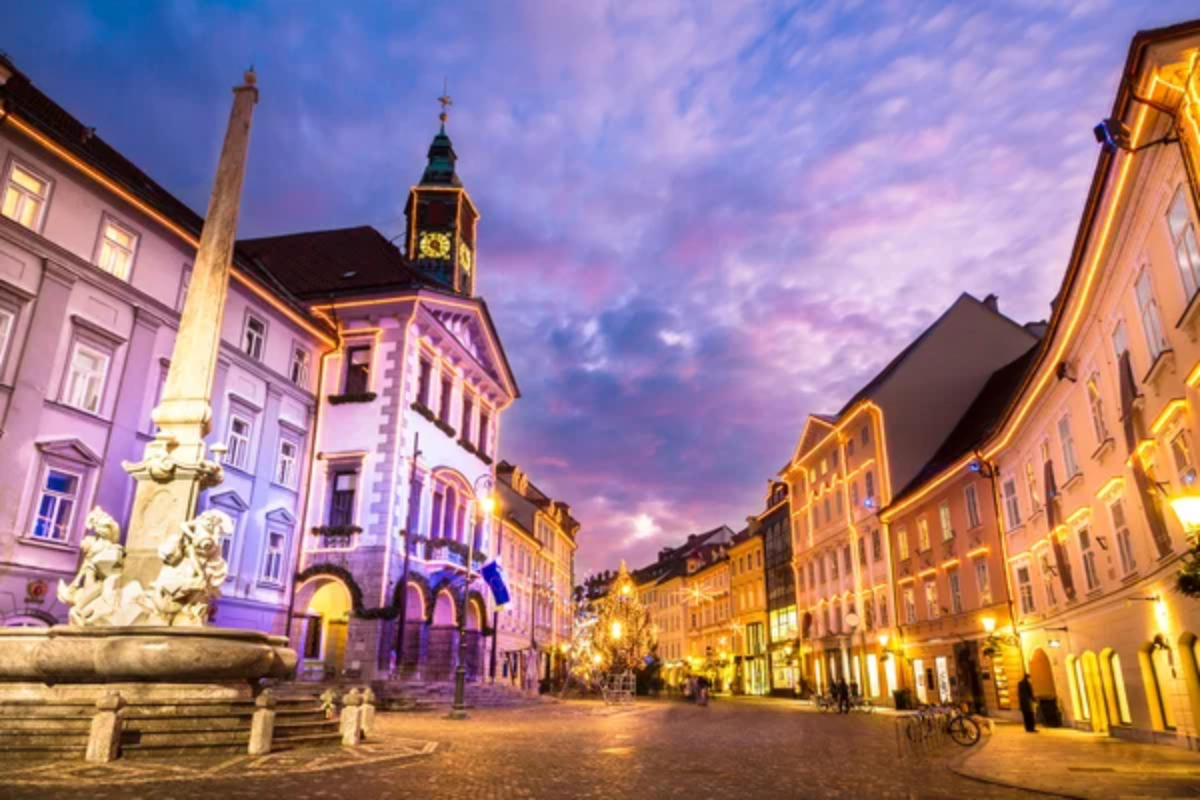
Ljubljana rewards the walking visitor with a rare combination of architectural harmony, historical depth, and contemporary energy—all compressed within a space you can cross in thirty minutes. Few European capitals retain such human proportion, where monumental buildings and intimate courtyards exist in perfect balance.
The thoughtful urban design, largely shaped by Plečnik’s vision, creates a sense of cohesion despite centuries of evolving architectural styles. The city’s name may challenge foreign tongues, but its walkable treasures speak a universal language of beauty that requires no translation.
More from Travel Pug

- Cities Growing so Fast You Won’t Recognize Them in 10 Years
- 13 Destinations Where Tourists Regularly Regret Their Trip
- 16 U.S. Cities That Are Quietly Becoming Travel Hotspots
- Where to Travel If You Love Long Bus Rides and Daydreams
- 20 Cities Perfect for Solo Travelers Who Crave Adventure & Culture
Like Travel Pug’s content? Follow us on MSN.
